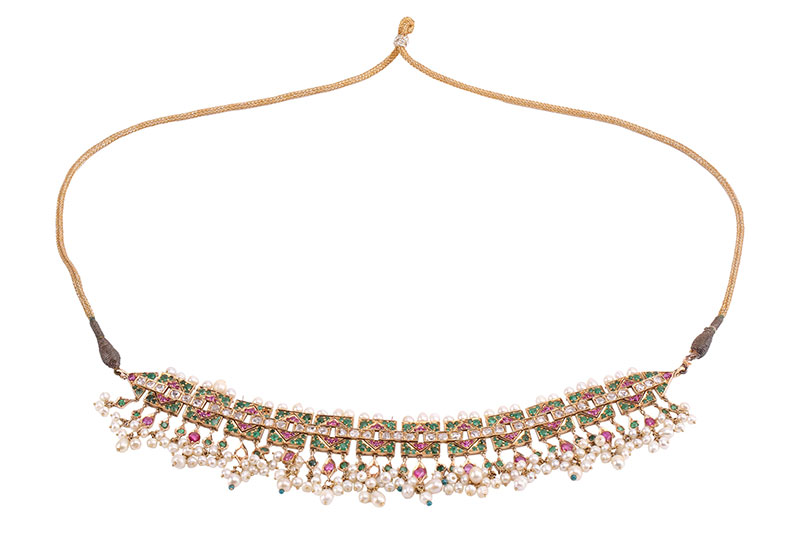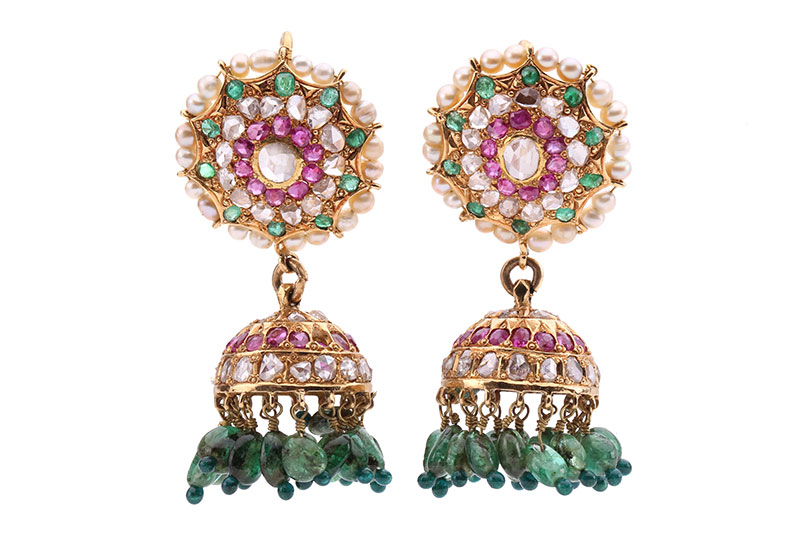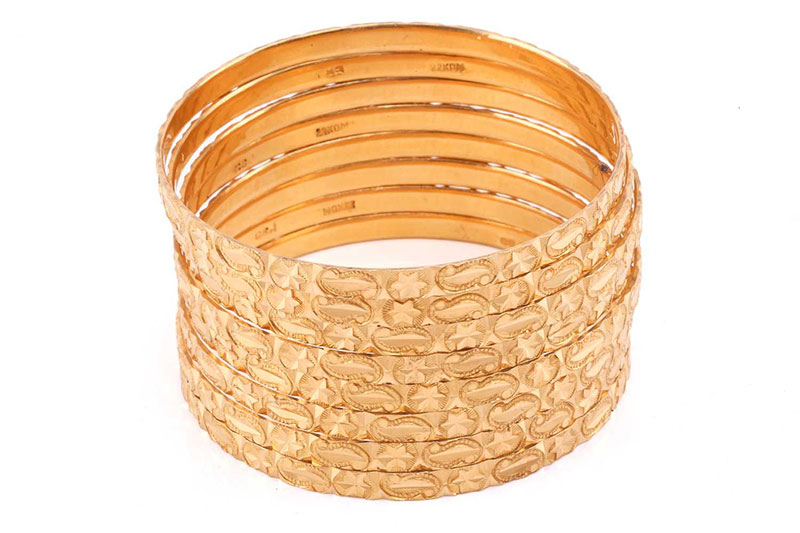What is Indian Jewellery?
Indian jewellery is renowned for its dazzling materials and elaborate craftsmanship
23/07/2025
The history of Indian jewellery dates back over many thousands of years, and well-known for elaborate finepieces and detailed craftsmanship, which are not just symbols of wealth and status but also hold religious and cultural significance. From birth to death, jewellery in India is an integral part of life, used in rituals, ceremonies, a source of financial security for women and, of course, as personal adornment.
Princess Nawabzadi Farrukh daughter of the Nawab of Surat - an Indian gem-set fringe choker necklace
India has evolved culturally over the centuries under various dynasties and Indian jewellery reflects some of theregional differences of this vast country with unique styles and techniques employed to create some trulyfascinating and glittering ornamentation. For instance, Kundan jewellery originated from the royal courts of Rajasthan and Gujerat and is the technique of setting glass and gemstones in gold foil creating highly elaborateand intricate pieces. Meenakari jewellery, originating from the Mughals, is the process of enamelling on metalwith vibrant colours and is often combined with Kundan. Pieces originating from Tamil Nady and Kerala are inspired by nature, whereas Polki jewellery, which also has its roots in Rajasthan, uses uncut diamonds to create stunning pieces with a heavy price tag.
Princess Nawabzadi Farrukh - a pair of Indian gem-set pendant earrings
Indian jewellery is common in the forms of bracelets, rings, earrings, and necklaces. Women receive jewellery as gifts from their own birth to the birth of their children and married women are the recipients of an array ofsymbolic jewellery reflecting their status. These include the Mangalsutra, a necklace symbolising the union between 2 souls which is tied around the bride’s neck by the groom during the wedding ceremony, the Nath(nose ring) and the toe ring which is said to have reflexology benefits promoting fertility.
Indian jewellery is renowned for its dazzling materials and elaborate craftsmanship. Primarily gold, silver, and platinum and adorned with precious and semi-precious gemstones, Indian jewellery is a visual feast of colour and texture. Popular gemstones used in pieces include, rubies, emeralds, sapphires, pearls, and diamonds, as well as topaz, aquamarine and tourmaline, each imbued with symbolic significance and auspicious properties.For instance, gold itself is believed to have divine connotations and is considered a lucky metal, symbolizing wealth, purity, and prosperity. In addition, Indian jewellery often incorporates materials like ivory, lac, glass, and enamel. The use of these materials varies by region and tradition further enhancing the rich diversity of the pieces.
A set of eight Indian bracelets
Indian jewellery is timelessly fashionable and there is a robust collectors’ market for this elaborate and beautiful jewellery, particularly Kundan and Polki pieces which are highly sought after in the UK. Dawsons has established itself as a reputable venue for buying and selling Indian jewellery, and our knowledgeable team of experts ensure that items are accurately appraised and authenticated, giving buyers and sellers supreme confidence.
RELATED ARTICLES
How Can You Tell if Jewellery is Real or Costume?
Are you thinking of selling any Indian Jewellery?
With a global audience of more than 10 million known bidders, Dawsons can secure the best prices.
Get in touch with an expert Valuer for confidential sales advice, we would be delighted to help you:


